CONTEXT
What is crypto and blockchain and what it solves?
Blockchain is a shared unchangeable ledger that enables the process of recording trading and tracking assets in a business network or, simply, a market. Virtually anything of value can be traded and tracked on a blockchain network, reducing risks and simplifying the process by eliminating the need for a third party. Blockchain is a distributed consensus system for parties that by nature do not trust each other to exchange information.
In the classic way of trading assets, there is a third institution (who owns the ledger) that processes the involved parties data, and guarantees the security of the transactions (banks, governments, brokers, investment funds, etc.). In a blockchain ecosystem, every participant in the network (nodes) owns a copy of the ledger, and every transaction is verified by every node through an individual cryptographic signature. If the transaction meets the requirements and data is correct, it is validated and becomes another “block” in the “chain”.
Therefore, blockchain provides a faster, safer, decentralized trading system for its users.
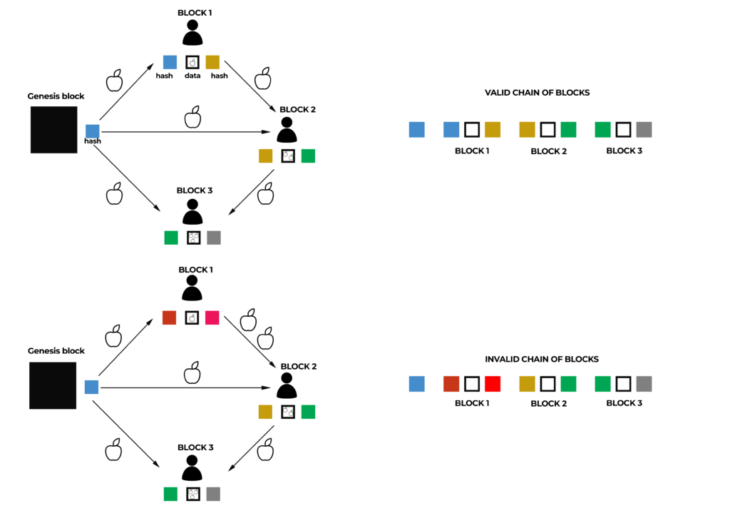
RESEARCH QUESTION
Can we avoid a central mediator in architecture and how that can benefit us?
The main goal of this research is to see if we can avoid central mediators in architecture and how we can benefit from avoiding them.
For this purpose, we look at modernism where the architect was the central authority which end up in being an abusive pole of power by implementing radical solutions.
On the opposite side, we have the vernacular architecture, “The architecture without architects” where the central authority is totally missing and the decisive factors for the final project are the materials provided by the environment and the needs of certain communities. This type of architecture is the reflection of the community needs, spirit and willing, but due to the lack of technology it cannot be mass produced and implemented on an urban scale.
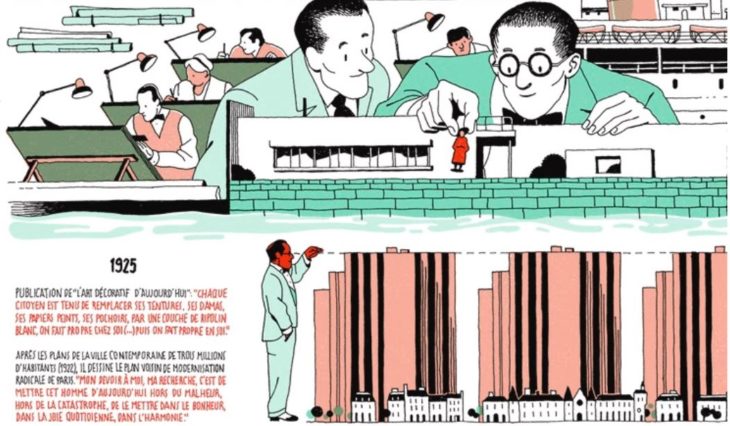
HISTORICAL PRECEDENTS
ATTEMPTS TO DISTRUPT AND DECENTRALIZE SYSTEMS
Talking about decentralization, it’s relevant to look at the historical precedents in disrupting the systems.Therefore, following Mark Alizart direction, we are going to use as case study the Protestant Reform, which was aiming at getting rid of the central church, Communism and Marx, who were aiming at getting rid of the aristocracy monopole, and lastly Capitalism, where private entities and the business environment is trying to get rid of state and the central bank.In the end all the systems are considered fails because by shifting the power from a central entity to another one proved to enforce new forms of centralization, even more brutal than the ones they were claiming to fight.
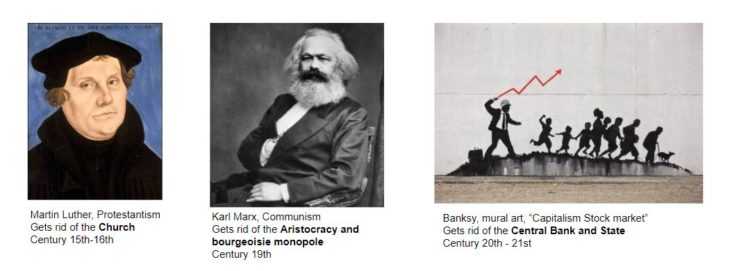
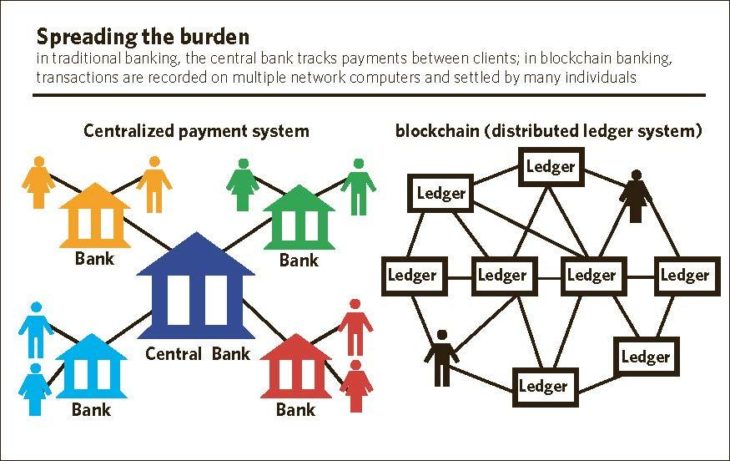
elibrary.imf.org, Spreading the Burden
HYPOTHESIS
Architecture can work in a blockchain system as a decentralized open source
We have seen so far the potential that blockchain technology has to disrupt an old centralized system and how can benefit other fields, especially in terms of monetization and financial aspects. But the question for this research is : How can blockchain technology change the AEC field?
In the last decades the constructions and architecture field has been one of the most reluctant ones in adoption of technology and innovation. Especially architecture, is a profession that had a hard time adapting to the new challenges and has been dictated by the real estate industry interests, to the detriment of both architects and communities. Therefore, through lobby and other means, the third parties involved in the construction process managed to corrupt and alter the end products of design in favor of profitability and low quality standards of execution and living.
So the question that lays is how can we use blockchain in architecture in order to disrupt the monopoly of the third actors involved in the architectural process and how can we give communities the power to be involved and connected to a process that is mainly concerning them and their quality of life?
This paper hypothesis is that the architectural process can function in a blockchain system, with the central authority as the genesis block who generate the protocol, people of the communities and the other parties involved in the construction process as validators of the protocol, and encryption in form of blockchain as a warrant of security of the protocol.
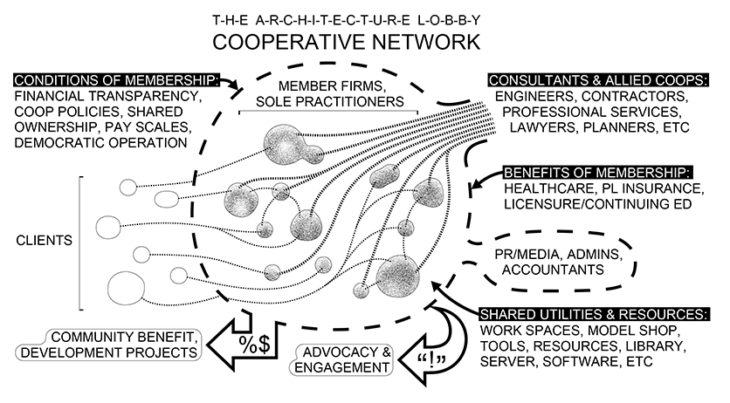
The Coop Network group of The Architecture Lobby
CASE STUDY
Blockerties
In their study “ Blockerties -Distributed Ledgers and their Impact on Urban Form”, Daniel Kohler, Anna Galika, Qiuru Pu and Junyi Bai, explore how new urban forms of property can be enabled by computational models of distributed ledgers being deployed with technologies like Blockchain. The final result called Interchain, is a chain of chains which due to the distribution create unprecedented patterns, thus creating new building forms and urban models based on blockchain logic.
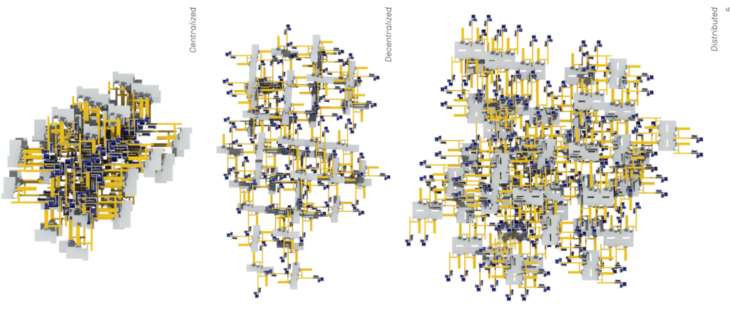
Blockerties, Distributed ledgers and their impact on urban form, D. Kohler, Bartlett
PERSPECTIVES
Future towards participatory protocols in urban planning and architecture
As a conclusion of our research, is clear that one solution to decentralize the architectural and urban process is to create a protocol generated by an authority, which in our case would be the genesis block. Afterwards these protocols will be validated for implementation by all the parties involved in this process with emphasizing of the community involvement in the validation as part of a participatory process in the urban development.
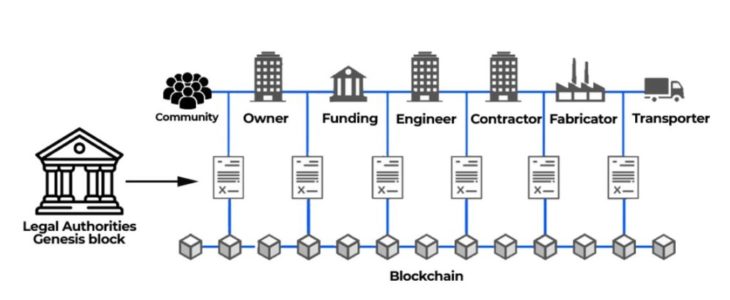
Architecture and blockchain ecosystems – Liberating solutions for libertarian models is a project of IAAC, the Institute for Advanced Architecture of Catalonia, developed during the Master in Advanced Architecture (MAA01) 2021/22 by students: Alexandru-Aurelian Girtan, Leorick Chilimanzi and Jeremiah Grace OonyuMinoletti; Faculty: Manuel Gausa and Jordi Vivaldi
REFERENCES
- Alizart, Mark. Cryptocommunism (Theory Redux). Wiley. Kindle Edition.
- Kohl, Daniel. Blockerties – Distributed Ledgers and their Impact on Urban Form. The Bartlett School of Architecture (UCL)
- Nausea, Cristian. Using Blockchain as a platform for Smart Cities, Journal of E-Technology, May 2018
- Wainwright, Oliver. The truth about property developers: how they are exploiting planning authorities and ruining our cities, The Telegraph, September 2014.
- Walsh, Nial. Could Future Cities be Crypto Cities?, Archdaily
- Rudofsky, Bernard. Architecture without Architects, A short introduction to Non-Pedigreed Architecture.
- Humphries, Courtney. How white came to be synonymous with clean and good, Nautil, August 2015.
- Wigley, Mark. Chronic whiteness, e-Flux Architecture. November 2020.
- Mahe, Vincent. Infographic: The life of Le Corbusier. November 2015